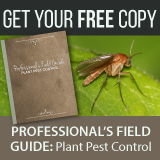

Pages: 1
| Posted: 04 Sep 2012 22:43 | |
|
Registered User Currently Offline Join Date: Mar 2012 |
Posts: 6 Reputation: Unranked User Rank: 1 - Seedling 
|
| I work in a large atrium that is loaded with scale, mealybug, aphids and a small amount of spider mite. Before I started with the company, they used the chemical safari with not much success because it has become resistant due to too much use. I would like to introduce biological insects, I have a list of which ones can be used but I do not know if we can start this now in the fall while the bad insects are going dormant or should I wait until spring. Any other suggestions along this line would be very appreciated. | |
| Posted: 05 Sep 2012 04:57 Last Edited By: Clem | |
|
Registered User Currently Offline Join Date: Jan 2011 |
Posts: 798 Reputation: 43 User Rank: 10 - Blossom 
|
|
(1) The reason that many of the pesticides we used to use are no longer available is (besides the EPA taking some off the market) PEST RESISTANCE from improper use. NEVER use the same pesticide or CLASS of pesticide (i.e., the same MOA = Method of Action, that is, stomach poison, IGR, nerve poison, etc.) for more than two successive applications or as instructed on the label (some cannot be used more than once on a given crop).
(2) Biological controls, especially live predators/parasites, require careful preparation and management, and most DO NOT do a good job of knocking down heavy pest loads and advanced infestations of things like scale. Biocontrols are best applied when pests are first scouted on the plants, so that the beneficials have a fighting chance at getting control of the pest before the pest population explodes. Also, most beneficials cannot be applied until residual traces of pesticides are gone from the plants to which they will be applied, or the beneficials may die before they can do their job. (3) Most beneficials won't persist in the interiorscape and must be re-applied when pest flare-ups recur. I would suggest knocking down your severe pest problem with applications of two or three pesticides with different MOAs first, preceded by physical/mechanical removal of parts of the plants most infested to reduce the pest load to be treated. Then you can initiate a beneficials program after the prescribed "cooling-off" period to allow the pesticide residues to fall below toxic levels for the beneficials. You can also use things like insecticidal soap, horticultural oil and Neem oil sprays instead of more toxic pesticides, but these will definitely require multiple applications, because they don't always do a great job of knocking down the pest populations with a single app. Clem |
|
| Posted: 08 Sep 2012 22:02 | |
|
Registered User Currently Offline Join Date: Mar 2012 |
Posts: 6 Reputation: Unranked User Rank: 1 - Seedling 
|
|
Thank you for the advice. Do you know of a good website that lists the different MOA's and also which beneficials are affected by which chemicals?
Have you had better success with one pesticide over another? Is this time of year good to start this or should we wait until spring when dormancy is ending? Thanks again! |
|
| Posted: 08 Sep 2012 22:12 | |
|
Registered User Currently Offline Join Date: Jan 2011 |
Posts: 798 Reputation: 43 User Rank: 10 - Blossom 
|
|
Here's one pretty good chart:
http://pested.okstate.edu/pdf/insecticide%20m ... The best success is gotten by mechanical/manual removal prior to treatment to dramatically cut the pest load. Scale are tough to treat, but imidacloprid will eventually get good control over them, even their tough relative, the woody adelgid, that was the scourge of the hemlock populations in North America until recently. Smothering or breaking down the waxy protective covering of scales using hort oils or soaps is also effective, but requires multiple applications and excellent diligence in spraying to get near 100% coverage. Clem |
|
Pages: 1
Interiorscape.com is sponsored by NewPro Containers ![]() RSS 2.0
RSS 2.0 ![]() Atom 1.0
Atom 1.0













